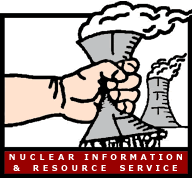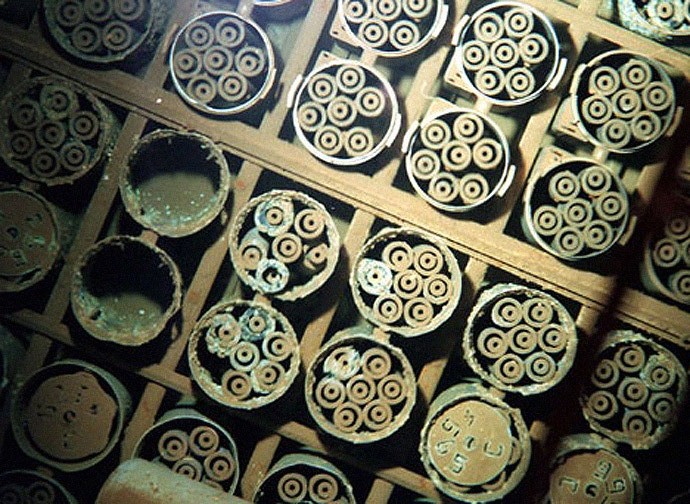|
New England Coalition
The New England Coalition (NEC), originally New England Coalition on Nuclear Pollution, is an educational non-profit organization based in Brattleboro, Vermont. Historically, it has been part of the anti-nuclear movement in the United States.New England Coalition The NEC is primarily concerned with legal action more than s. It was involved in both legal action and protests about the prior to its shut down in 1992, and was involved in legal action and protests over extending the license to operate at the |
Brattleboro, Vermont
Brattleboro (), originally Brattleborough, is a town in Windham County, Vermont, United States. The most populous municipality abutting Vermont's eastern border with New Hampshire, which is the Connecticut River, Brattleboro is located about north of the Massachusetts state line, at the confluence of Vermont's West River and the Connecticut. As of the 2020 Census, the population was 12,184. There are satellite campuses of two colleges in Brattleboro: Community College of Vermont, and Vermont Technical College. Located in Brattleboro are the New England Center for Circus Arts, Vermont Jazz Center, and the Brattleboro Retreat, a mental health and addictions hospital. History Indigenous people This place was called "Wantastiquet" by the Abenaki people, which meant "lost river", "river that leads to the west", or "river of the lonely way". The Abenaki would transit this area annually between their summer hunting grounds near Swanton, and their winter settlement near Northfield, ... [...More Info...] [...Related Items...] OR: [Wikipedia] [Google] [Baidu] |
Vermont General Assembly
The Vermont General Assembly is the legislative body of the state of Vermont, in the United States. The Legislature is formally known as the "General Assembly," but the style of "Legislature" is commonly used, including by the body itself. The General Assembly is a bicameral legislature, consisting of the 150-member Vermont House of Representatives and the 30-member Vermont Senate. Members of the House are elected by single and two-member districts. 58 districts choose one member, and 46 choose two, with the term of service being two years. The Senate includes 30 Senators, elected by eight single-member and nine multi-member districts with two or three members each. It is the only state legislative body in the United States in which a third-party has had continuous representation and been consecutively elected alongside Democrats and Republicans. The Vermont General Assembly meets at the Vermont State House in the state capital of Montpelier. Biennial terms commence on the Wedne ... [...More Info...] [...Related Items...] OR: [Wikipedia] [Google] [Baidu] |
Anti-nuclear Organizations Based In The United States
The anti-nuclear movement is a social movement that opposes various nuclear technologies. Some direct action groups, environmental movements, and professional organisations have identified themselves with the movement at the local, national, or international level.Fox ButterfieldProfessional Groups Flocking to Antinuclear Drive ''The New York Times'', 27 March 1982. Major anti-nuclear groups include Campaign for Nuclear Disarmament, Friends of the Earth, Greenpeace, International Physicians for the Prevention of Nuclear War, Peace Action, Seneca Women's Encampment for a Future of Peace and Justice and the Nuclear Information and Resource Service. The initial objective of the movement was nuclear disarmament, though since the late 1960s opposition has included the use of nuclear power. Many anti-nuclear groups oppose both nuclear power and nuclear weapons. The formation of green parties in the 1970s and 1980s was often a direct result of anti-nuclear politics.John Barry ... [...More Info...] [...Related Items...] OR: [Wikipedia] [Google] [Baidu] |
List Of Anti-nuclear Protests In The United States
A ''list'' is any set of items in a row. List or lists may also refer to: People * List (surname) Organizations * List College, an undergraduate division of the Jewish Theological Seminary of America * SC Germania List, German rugby union club Other uses * Angle of list, the leaning to either port or starboard of a ship * List (information), an ordered collection of pieces of information ** List (abstract data type), a method to organize data in computer science * List on Sylt, previously called List, the northernmost village in Germany, on the island of Sylt * ''List'', an alternative term for ''roll'' in flight dynamics * To ''list'' a building, etc., in the UK it means to designate it a listed building that may not be altered without permission * Lists (jousting), the barriers used to designate the tournament area where medieval knights jousted * ''The Book of Lists'', an American series of books with unusual lists See also * The List (other) * Listing (di ... [...More Info...] [...Related Items...] OR: [Wikipedia] [Google] [Baidu] |
List Of Anti-nuclear Groups In The United States
More than 80 anti-nuclear groups are operating, or have operated, in the United States. These include Abalone Alliance, Clamshell Alliance, Greenpeace USA, Institute for Energy and Environmental Research, Musicians United for Safe Energy, Nevada Desert Experience, Nuclear Control Institute, Nuclear Information and Resource Service, Public Citizen Energy Program, Shad Alliance, and the Sierra Club. These are direct action, environmental, health, and public interest organizations who oppose nuclear weapons and/or nuclear power. In 1992, the chairman of the Nuclear Regulatory Commission said that "his agency had been pushed in the right direction on safety issues because of the pleas and protests of nuclear watchdog groups". Some of the most influential groups in the anti-nuclear movement have had members who included Nobel Laureates (e.g., Linus Pauling and Hermann Joseph Muller). These scientists have belonged primarily to two groups: the Federation of American Scientists, and t ... [...More Info...] [...Related Items...] OR: [Wikipedia] [Google] [Baidu] |
Environmental Movement
The environmental movement (sometimes referred to as the ecology movement), also including conservation and green politics, is a diverse philosophical, social, and political movement for addressing environmental issues. Environmentalists advocate the just and sustainable management of resources and stewardship of the environment through changes in public policy and individual behaviour. In its recognition of humanity as a participant in (not enemy of) ecosystems, the movement is centered on ecology, health, and human rights. The environmental movement is an international movement, represented by a range of organizations, from enterprises to grassroots and varies from country to country. Due to its large membership, varying and strong beliefs, and occasionally speculative nature, the environmental movement is not always united in its goals. The movement also encompasses some other movements with a more specific focus, such as the climate movement. At its broadest, the ... [...More Info...] [...Related Items...] OR: [Wikipedia] [Google] [Baidu] |
Radionuclide
A radionuclide (radioactive nuclide, radioisotope or radioactive isotope) is a nuclide that has excess nuclear energy, making it unstable. This excess energy can be used in one of three ways: emitted from the nucleus as gamma radiation; transferred to one of its electrons to release it as a conversion electron; or used to create and emit a new particle (alpha particle or beta particle) from the nucleus. During those processes, the radionuclide is said to undergo radioactive decay. These emissions are considered ionizing radiation because they are energetic enough to liberate an electron from another atom. The radioactive decay can produce a stable nuclide or will sometimes produce a new unstable radionuclide which may undergo further decay. Radioactive decay is a random process at the level of single atoms: it is impossible to predict when one particular atom will decay. However, for a collection of atoms of a single nuclide the decay rate, and thus the half-life (''t''1/2) for ... [...More Info...] [...Related Items...] OR: [Wikipedia] [Google] [Baidu] |
Shutdown (nuclear Reactor)
Shutdown is the state of a nuclear reactor when the fission reaction is slowed significantly or halted completely. Different nuclear reactor designs have different definitions for what "shutdown" means, but it typically means that the reactor is not producing a measurable amount of electricity or heat, and is in a stable condition with very low reactivity. Shutdown Margins and Scientific Definitions The shutdown margin for nuclear reactors (that is, when the reactor is considered to be safely in a shutdown state) is usually defined either in terms of reactivity or dollars. For reactivity, this is calculated in units of delta-k/k, where k is equal to the criticality of the reactor (essentially, how fast and controlled the nuclear fission reaction is). It is sometimes also measured in dollars, where one dollar is equal to a reactor in prompt criticality, this can then be used to calculate the change in reactivity required to shutdown or start up the reactor. The shutdown margin ... [...More Info...] [...Related Items...] OR: [Wikipedia] [Google] [Baidu] |
Soil Contamination
Soil contamination, soil pollution, or land pollution as a part of land degradation is caused by the presence of xenobiotic (human-made) chemicals or other alteration in the natural soil environment. It is typically caused by industrial activity, agricultural chemicals or improper disposal of waste. The most common chemicals involved are petroleum hydrocarbons, polynuclear aromatic hydrocarbons (such as naphthalene and benzo(a)pyrene), solvents, pesticides, lead, and other heavy metals. Contamination is correlated with the degree of industrialization and intensity of chemical substance. The concern over soil contamination stems primarily from health risks, from direct contact with the contaminated soil, vapour from the contaminants, or from secondary contamination of water supplies within and underlying the soil. Mapping of contaminated soil sites and the resulting cleanups are time-consuming and expensive tasks, and require expertise in geology, hydrology, chemistry, compute ... [...More Info...] [...Related Items...] OR: [Wikipedia] [Google] [Baidu] |
Groundwater Pollution
Groundwater pollution (also called groundwater contamination) occurs when pollutants are released to the ground and make their way into groundwater. This type of water pollution can also occur naturally due to the presence of a minor and unwanted constituent, contaminant, or impurity in the groundwater, in which case it is more likely referred to as contamination rather than pollution. Groundwater pollution can occur from on-site sanitation systems, landfill leachate, effluent from wastewater treatment plants, leaking sewers, petrol filling stations, hydraulic fracturing (fracking) or from over application of fertilizers in agriculture. Pollution (or contamination) can also occur from naturally occurring contaminants, such as arsenic or fluoride. Using polluted groundwater causes hazards to public health through poisoning or the spread of disease (water-borne diseases). The pollutant often creates a contaminant plume within an aquifer. Movement of water and dispersion within the ... [...More Info...] [...Related Items...] OR: [Wikipedia] [Google] [Baidu] |
Tritium
Tritium ( or , ) or hydrogen-3 (symbol T or H) is a rare and radioactive isotope of hydrogen with half-life about 12 years. The nucleus of tritium (t, sometimes called a ''triton'') contains one proton and two neutrons, whereas the nucleus of the common isotope hydrogen-1 (''protium'') contains one proton and zero neutrons, and that of hydrogen-2 (''deuterium'') contains one proton and one neutron. Naturally occurring tritium is extremely rare on Earth. The atmosphere has only trace amounts, formed by the interaction of its gases with cosmic rays. It can be produced artificially by irradiating lithium metal or lithium-bearing ceramic pebbles in a nuclear reactor and is a low-abundance byproduct in normal operations of nuclear reactors. Tritium is used as the energy source in radioluminescent lights for watches, gun sights, numerous instruments and tools, and even novelty items such as self-illuminating key chains. It is used in a medical and scientific setting as a radioacti ... [...More Info...] [...Related Items...] OR: [Wikipedia] [Google] [Baidu] |
High-level Radioactive Waste Management
High-level radioactive waste management concerns how radioactive materials created during production of nuclear power and nuclear weapons are dealt with. Radioactive waste contains a mixture of short-lived and long-lived nuclides, as well as non-radioactive nuclides. There was reportedly some of high-level nuclear waste stored in the United States in 2002. The most troublesome transuranic elements in spent fuel are neptunium-237 (half-life two million years) and plutonium-239 (half-life 24,000 years). Consequently, high-level radioactive waste requires sophisticated treatment and management to successfully isolate it from the biosphere. This usually necessitates treatment, followed by a long-term management strategy involving permanent storage, disposal or transformation of the waste into a non-toxic form. Radioactive decay follows the half-life rule, which means that the rate of decay is inversely proportional to the duration of decay. In other words, the radiation from a lo ... [...More Info...] [...Related Items...] OR: [Wikipedia] [Google] [Baidu] |





.jpg)

